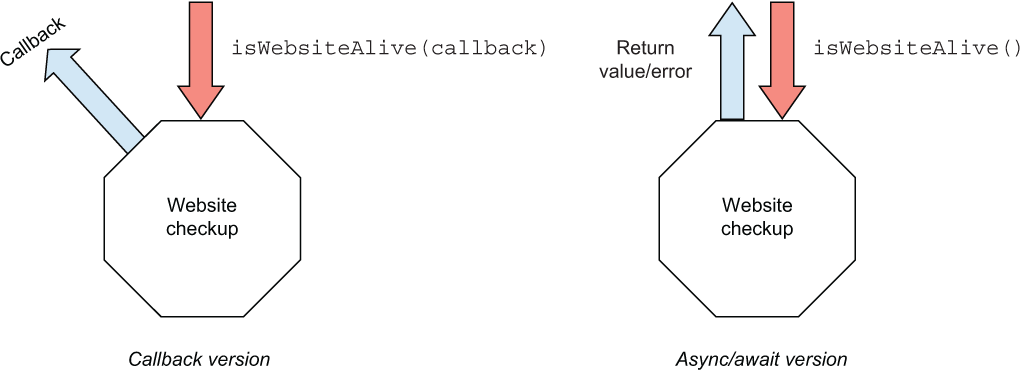When we’re dealing with regular synchronous code, waiting for actions to finish is implicit. We don’t worry about it, and we don’t really think about it too much. When dealing with asynchronous code, however, waiting for actions to finish becomes an explicit activity that is under our control. Asynchronicity makes code, and the tests for that code, potentially trickier because we have to be explicit about waiting for actions to complete.
Let’s say we have a module that checks whether our website at example.com is alive. It does this by fetching the context from the main URL and checking for a specific word, “illustrative,” to determine if the website is up. We’ll look at two different and very simple implementations of this functionality. The first uses a callback mechanism, and the second uses an async/await mechanism.
